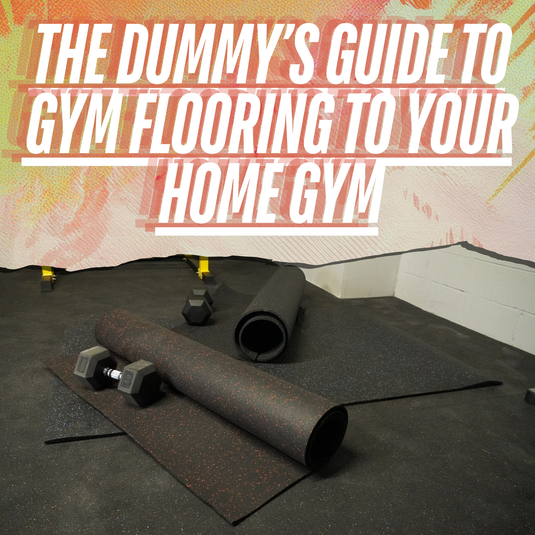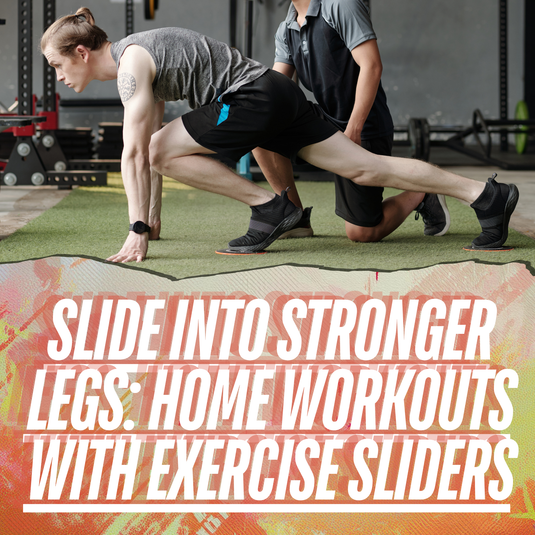Dumbbells for Every Fitness Level

⏱️ Estimated Read Time: 6 minutes
🧠 TL;DR
- Dumbbells for Every Fitness Level offers effective, accessible movements for targeted results.
- This guide is designed to help you move smarter, build strength, and stay consistent.
✍️ Summary
This post explores dumbbells for every fitness level in a way that’s actionable and easy to follow. Whether you're new to this style of training or leveling up, it includes practical takeaways for your routine.
📚 Table of Contents
Dumbbells, often underestimated in their simplicity, hold a profound significance in strength training, presenting a myriad of advantages for fitness enthusiasts and athletes alike. These compact yet versatile tools have been a staple in fitness routines for generations, offering an array of exercises that target various muscle groups and cater to diverse fitness goals. In this comprehensive guide, we explore the transformative power of dumbbells, delving into their history, dissecting their fundamental components, and uncovering the numerous benefits they offer to those who wield them with purpose and dedication.
Understanding Dumbbells

Dumbbells, also known as hand weights or free weights, consist of two weighted ends connected by a handle. Unlike barbells, which feature a single elongated bar, dumbbells provide unilateral resistance for each arm, allowing for unilateral movements and enhanced muscle engagement. This freedom of movement enables a wide range of exercises targeting various muscle groups, making dumbbells a versatile and effective tool for strength training.
Dumbbells' compact size makes them accessible for home workouts, eliminating the need for bulky equipment. With dumbbells, you can tailor exercises to your specific needs, whether focusing on muscle building, full body workouts, toning, or rehabilitation. Their user-friendly design suits all fitness levels, from beginners to advanced athletes, ensuring everyone can reap the rewards of strength training quickly and efficiently.
Components of Dumbbells: Handles, Weights, and Construction
At their core, dumbbells are composed of three primary components: handles, weights, and construction materials.
Handles
Dumbbells feature handles made of durable materials like metal or rubber, ensuring a firm and comfortable grip during workouts. The handle design minimizes slippage, allowing for better lifting control and stability.
Weights
Dumbbells come with interchangeable weights, offering versatility in adjusting resistance levels according to individual fitness goals and strength levels. These weights can range from just a few pounds to over a hundred pounds, catering to beginners and experienced lifters.
Construction Materials
The materials used in the construction of dumbbells, including iron, steel, rubber, or plastic, play a crucial role in their durability and overall quality. High-quality materials ensure long-lasting performance and resistance to wear and tear, making them a reliable investment for strength training enthusiasts.
Benefits of Dumbbell Training

Dumbbells offer many benefits that improve strength, muscle growth, and overall fitness. Here are some of the critical advantages of incorporating dumbbell training into your fitness regimen:
Versatility
Dumbbells allow for various exercises targeting various muscle groups, including the chest, back, shoulders, arms, and legs. From classic movements like bicep curls and shoulder presses to dynamic exercises like lunges and renegade rows, the versatility of dumbbells ensures a comprehensive full-body workout experience.
Unilateral Training
Unlike barbells, which require both arms to move in unison, dumbbells provide independent resistance for each arm. Allowing for unilateral resistance facilitates unilateral training, which promotes balanced muscle development, corrects strength imbalances, and enhances coordination and stability for functional movement patterns.
Functional Strength
Dumbbell exercises mimic real-life movements and engage stabilizing muscles, promoting functional strength and movement patterns. Dumbbell training improves performance in everyday activities and athletic pursuits by challenging muscles in multiple planes of motion.
Joint-Friendly
Dumbbells offer greater freedom of movement and less joint strain than barbells, making them suitable for individuals with joint issues or mobility restrictions. With proper form and technique, dumbbell exercises can be performed safely and effectively, minimizing the risk of injury.
Space-Efficient
Dumbbells require minimal space and equipment, making them ideal for home gyms or small workout spaces. Their compact size and portability allow for convenient storage and transportation, enabling you to stay consistent with your workouts wherever you go.
Progressive Overload
Dumbbells facilitate progressive overload, a fundamental principle of strength training that gradually increases resistance to stimulate muscle growth and strength gains. By adjusting the weight incrementally over time, you can continuously challenge your muscles and achieve ongoing progress.
Get Temporary Access To All Our Dumbbell Programming + Create Your Own With Our Workout Generator! No Credit Card Required !
Benefits for Specific Goals
Dumbbell training can support specific fitness goals, such as muscle building, fat loss, improved athletic performance, or functional strength for daily activities. Let's Discuss the unique advantages of dumbbells for each goal and provide tips for optimizing results.
For beginners
Dumbbell training is ideal for beginners because it allows them to start with lighter weights and focus on mastering proper form and technique before progressing to heavier loads. Beginners can use dumbbells to perform basic exercises such as goblet squats, dumbbell rows, and overhead presses to build a foundation of strength and stability.
For intermediate lifters
Intermediate lifters can benefit from dumbbell training by incorporating more complex exercises and gradually increasing resistance. They can use dumbbells to perform compound movements like dumbbell lunges, single-arm dumbbell presses, and Romanian deadlifts to target multiple muscle groups simultaneously and challenge their strength and coordination.
For advanced lifters
Advanced lifters can use dumbbells to perform advanced variations of exercises, such as Bulgarian split squats, single-arm dumbbell snatches, and Turkish get-ups, to enhance their strength, power, and muscular endurance. Dumbbells also allow advanced lifters to perform unilateral exercises to address strength imbalances and fine-tune muscle development.
What Are the Benefits of Dumbbell Exercises for Women?
Dumbbell exercises offer numerous benefits for women, contributing to overall health, fitness, and well-being. Here are some key advantages:
1. Strength Building
- Regular use of dumbbells helps build and tone muscles, leading to a leaner, more defined physique.
- Enhances the strength needed for everyday activities, making daily tasks easier to perform.
2. Bone Health
- Weight-bearing exercises with dumbbells can increase bone density, reducing the risk of osteoporosis and fractures.
3. Metabolic Boost
- Building muscle mass through dumbbell exercises boosts metabolism, aiding in weight management and fat loss.
4. Improved Posture
- Strengthening the core and upper body muscles helps improve posture and reduce the risk of back pain.
5. Cardiovascular Health
- Incorporating dumbbells into a workout routine can improve cardiovascular health by increasing heart rate and promoting better circulation.
6. Flexibility and Balance
- Enhances joint stability and flexibility, reducing the risk of injuries.
- Improves balance and coordination, which are crucial for overall fitness and injury prevention.
7. Mental Health Benefits
- Exercise, including dumbbell workouts, releases endorphins, which can help reduce stress and improve mood.
- Achieving strength and fitness goals can enhance self-esteem and body confidence.
8. Versatility and Convenience
- Dumbbells offer a wide range of exercises targeting different muscle groups, providing a comprehensive workout.
- Dumbbells are compact and can be used at home, making it easier to maintain a consistent workout routine without the need for a gym.
Incorporating dumbbell exercises into a regular fitness routine can lead to significant health benefits, contributing to a stronger, healthier, and more confident self.
How Can You Incorporate Dumbbell Training Into Your Fitness Routine?

Integrating dumbbell training into your fitness routine is a strategic step toward achieving your strength and fitness goals. Here's how to seamlessly incorporate dumbbell exercises into your workouts and maximize their effectiveness:
Exercise Selection
Opt for a diverse range of dumbbell exercises that target different muscle groups and movement patterns. Incorporate compound movements like squats, lunges, presses, rows, and deadlifts alongside isolation exercises focusing on specific muscles. This variety ensures comprehensive muscle stimulation and balanced development across your entire body.
Training Frequency
Aim to include dumbbell training in your workout routine 2-3 times per week, with rest days interspersed to allow for muscle recovery and growth. Adjust the frequency and intensity of your workouts based on your fitness level, goals, and recovery capacity. Consistency is vital to achieving optimal results while avoiding burnout or overtraining.
Progressive Overload
Embrace the principle of progressive overload by gradually increasing the weight lifted, number of sets, and repetitions over time. Aim for minor, incremental improvements in resistance to challenge your muscles and elicit adaptations continually. This approach ensures ongoing progress and prevents stagnation or plateaus in your training.
Form and Technique
Proper form and technique should be prioritized during dumbbell exercises to maximize their effectiveness and minimize the risk of injury. Focus on maintaining good posture, engaging the core muscles, and controlling the movement through a full range of motion. Quality of movement should always take precedence over quantity, so strive for precision and control in every repetition.
Rest and Recovery
Allow your muscles adequate time to rest and recover between dumbbell workouts to optimize recovery and prevent overtraining. Incorporate active recovery strategies such as foam rolling, stretching, and low-intensity cardio to promote circulation, alleviate muscle soreness, and enhance overall recovery. Listen to your body's signals and adjust your training intensity or volume to avoid pushing past your limits.
Nutrition and Hydration
Support your dumbbell training efforts with a well-rounded diet rich in lean proteins, complex carbohydrates, healthy fats, and micronutrients. Proper nutrition fuels your workouts, promotes muscle repair and growth, and optimizes overall performance. Stay hydrated by drinking water before, during, and after exercise to maintain adequate hydration levels and support optimal physiological function. By nourishing your body correctly and staying hydrated, you'll maximize the benefits of your dumbbell training and accelerate your progress toward your fitness goals.
Dumbbell Workout Plan from Beginners to Advanced Level

Whether you're just starting your fitness journey or looking to take your workouts to the next level, Dumbbells will help you with everything you need to succeed. From basic exercises for beginners to advanced training techniques for seasoned lifters, they offer a progressive approach to help you achieve your fitness goals and unleash your full potential. Get ready to transform your body and elevate your fitness with the power of dumbbells!
Here's a 1-week workout plan for beginners, intermediate, and advanced lifters using dumbbell exercises:
Beginner Workout Plan
Day 1: Full Body
- Goblet Squats: 3 sets of 10 reps
- Dumbbell Rows: 3 sets of 10 reps (each arm)
- Dumbbell Chest Press: 3 sets of 10 reps
- Dumbbell Shoulder Press: 3 sets of 10 reps
- Dumbbell Lunges: 3 sets of 10 reps (each leg)
- Plank: 3 sets, hold for 30 seconds
Day 2: Rest
Day 3: Full Body
- Dumbbell Deadlifts: 3 sets of 10 reps
- Dumbbell Bent-Over Rows: 3 sets of 10 reps
- Dumbbell Bench Press: 3 sets of 10 reps
- Dumbbell Shoulder Raises: 3 sets of 10 reps
- Dumbbell Step-Ups: 3 sets of 10 reps (each leg)
- Russian Twists: 3 sets of 10 reps (each side)
Day 4: Rest
Day 5: Full Body
- Dumbbell Squat to Shoulder Press: 3 sets of 10 reps
- Dumbbell Romanian Deadlifts: 3 sets of 10 reps
- Dumbbell Chest Flyes: 3 sets of 10 reps
- Dumbbell Lateral Raises: 3 sets of 10 reps
- Dumbbell Calf Raises: 3 sets of 15 reps
- Bicycle Crunches: 3 sets of 15 reps (each side)
Day 6 & 7: Rest or Light Cardio
Intermediate Workout Plan
Day 1: Upper Body
- Dumbbell Bench Press: 4 sets of 8 reps
- Dumbbell Rows: 4 sets of 8 reps (each arm)
- Dumbbell Shoulder Press: 4 sets of 8 reps
- Dumbbell Bicep Curls: 4 sets of 10 reps
- Tricep Dumbbell Kickbacks: 4 sets of 10 reps
Day 2: Lower Body
- Goblet Squats: 4 sets of 8 reps
- Dumbbell Romanian Deadlifts: 4 sets of 8 reps
- Dumbbell Lunges: 4 sets of 10 reps (each leg)
- Dumbbell Calf Raises: 4 sets of 15 reps
- Plank: 4 sets, hold for 45 seconds
Day 3: Rest
Day 4: Full Body
- Dumbbell Deadlifts: 4 sets of 8 reps
- Dumbbell Chest Press: 4 sets of 8 reps
- Dumbbell Shoulder Raises: 4 sets of 10 reps
- Dumbbell Russian Twists: 4 sets of 12 reps (each side)
- Dumbbell Farmers Walk: 4 sets, walk for 30 seconds
Day 5 & 6: Rest or Light Cardio
Advanced Workout Plan
Day 1: Upper Body Strength
- Dumbbell Incline Bench Press: 5 sets of 5 reps
- Dumbbell Bent-Over Rows: 5 sets of 5 reps (each arm)
- Dumbbell Arnold Press: 5 sets of 5 reps
- Dumbbell Hammer Curls: 5 sets of 8 reps
- Dumbbell Skull Crushers: 5 sets of 8 reps
Day 2: Lower Body Strength
- Dumbbell Front Squats: 5 sets of 5 reps
- Dumbbell Stiff Leg Deadlifts: 5 sets of 5 reps
- Bulgarian Split Squats: 5 sets of 8 reps (each leg)
- Dumbbell Step-Ups: 5 sets of 8 reps (each leg)
- Dumbbell Standing Calf Raises: 5 sets of 12 reps
Day 3: Rest
Day 4: Upper Body Hypertrophy
- Dumbbell Flat Bench Press: 4 sets of 10 reps
- Dumbbell Renegade Rows: 4 sets of 10 reps (each arm)
- Dumbbell Lateral Raises: 4 sets of 12 reps
- Dumbbell Concentration Curls: 4 sets of 12 reps
- Dumbbell Tricep Overhead Extensions: 4 sets of 12 reps
Day 5: Lower Body Hypertrophy
- Dumbbell Sumo Squats: 4 sets of 10 reps
- Dumbbell Walking Lunges: 4 sets of 10 reps (each leg)
- Dumbbell Romanian Deadlifts: 4 sets of 12 reps
- Dumbbell Hip Thrusts: 4 sets of 12 reps
- Dumbbell Standing Calf Raises: 4 sets of 15 reps
Day 6 & 7: Rest or Active Recovery
Before diving into your dumbbell training journey, it's crucial to prioritize safety to prevent injuries and maximize the effectiveness of your workouts. Here are some essential safety tips to consider before incorporating dumbbell training into your fitness routine:
Get Temporary Access To All Our Dumbbell Programming + Create Your Own With Our Workout Generator! No Credit Card Required !
Safety Precautions and Considerations
Before diving into your dumbbell training journey, it's crucial to prioritize safety to prevent injuries and maximize the effectiveness of your workouts. Here are some essential safety tips to consider before incorporating dumbbell training into your fitness routine:
Warm-Up Properly
Before starting your dumbbell workout, it's crucial to warm up your muscles and joints adequately. A dynamic warm-up routine, including movements like arm circles, leg swings, and bodyweight squats, helps increase blood flow to your muscles, improves flexibility, and reduces the risk of injury during your workout.
Start with Light Weights
Especially if you're new to dumbbell training, begin with lighter weights to allow your body to gradually adapt to the movements and load. Starting light also helps you focus on mastering proper form and technique, which is essential for preventing injuries and maximizing the effectiveness of your workout.
Use Proper Form
Proper form is critical to getting the most out of your dumbbell exercises while minimizing the risk of injury. Maintain correct posture throughout each exercise, engage your core for stability, and move through the full range of motion for each repetition. Avoid using momentum to lift the weights, and instead, focus on controlled movements to target the intended muscle groups effectively.
Progress Gradually
As you become more comfortable with your dumbbell workouts, gradually increase the weight, sets, and repetitions to continue challenging your muscles and promoting strength gains. However, avoid progressing too quickly, as this increases the risk of overuse injuries. Aim for small, incremental increases in intensity to allow your muscles to adapt and grow stronger over time.
Listen to Your Body
Pay close attention to how your body feels during your workouts. If you experience discomfort or pain, especially in your joints or muscles, stop the exercise immediately and assess your form. It's essential to differentiate between the usual discomfort associated with muscle fatigue and the sharp pain that may indicate an injury. If necessary, adjust your technique, reduce the weight, or choose a different exercise to avoid exacerbating any issues. Always prioritize safety and injury prevention during your dumbbell training sessions.
By following these safety tips and guidelines, you can enjoy the benefits of dumbbell training while minimizing the risk of injury and maximizing your results. Remember to listen to your body, prioritize proper form, and progress at a pace suitable for your fitness level and goals. With consistency, dedication, and intelligent training practices, you can achieve your strength and fitness objectives safely and effectively with dumbbells.
Tips for Choosing the Right Dumbbells

When selecting the right dumbbells for your fitness journey, several factors must be considered to ensure they align with your goals and preferences. Here are some tips to help you make an informed decision:
Weight Range
Look for adjustable dumbbells that offer a wide range of weight options. These devices allow you to adjust the resistance as you progress in your strength training journey. This versatility ensures that your dumbbells can grow with you and accommodate various exercises and intensity levels.
Durability
Opt for dumbbells from high-quality materials such as cast iron, steel, or rubber-coated plates. These materials are durable, long-lasting, and able to withstand the rigors of regular use, ensuring that your investment pays off in the long run.
Grip Comfort
Consider the grip design and texture of the dumbbells to ensure they provide a comfortable and secure grip during workouts. Look for ergonomic handles with textured surfaces or contoured grips that prevent slippage and minimize hand fatigue, allowing you to focus on proper form and technique.
Space Considerations
Adjustable dumbbells are an excellent space-saving solution if you have limited space in your home gym or workout area. They eliminate the need for multiple dumbbells cluttering your space and offer compact storage options, making them ideal for small apartments or home gyms.
Budget
Set a budget for your dumbbell purchase and explore options within your price range that meet your needs and preferences. While adjustable dumbbells may have a higher upfront cost, they offer versatility and long-term value compared to fixed-weight dumbbells. However, suppose you have specific preferences or only need a few select weights. In that case, fixed-weight dumbbells may be a more budget-friendly option.
Specialty Features
Consider any particular features or designs that may enhance your workout experience, such as hexagonal dumbbells for added stability during floor exercises or neoprene-coated dumbbells for a softer grip and vibrant colors. Evaluate these features based on their relevance to your workout routine and personal preferences.
By considering these tips, you can confidently choose the right dumbbells to support your fitness goals, maximize your workout efficiency, and enjoy a rewarding strength training experience. Whether you opt for adjustable dumbbells, fixed-weight dumbbells, or specialty dumbbells, investing in quality equipment that aligns with your needs will set you up for success on your fitness journey.
Get Temporary Access To All Our Dumbbell Programming + Create Your Own With Our Workout Generator! No Credit Card Required !
Conclusion
The journey with dumbbells is not just about physical transformation—it's about embracing a lifestyle of health, vitality, and self-improvement. Integrating dumbbell training into your routine and committing to consistent effort and dedication can unlock your full potential and experience the transformative power of strength and fitness.
In conclusion, dumbbells are invaluable tools for building strength, enhancing muscle growth, and improving overall fitness. From their versatile design and functional benefits to their space-efficient nature and progressive overload capabilities, dumbbells offer many advantages for fitness enthusiasts of all levels. By incorporating dumbbell training into your fitness routine and following sound training principles, you can unlock your full potential, achieve your fitness goals, and embark on lifelong health and wellness. So, embrace the power of the dumbbell, harness its transformative potential, and elevate your fitness regimen to new heights of strength and vitality.
Helpful Resources:
- Be alerted when we publish more like this to our blog here
- Download our app here
- Daily workout plans here
- Fitness Equipment like dumbbells and adjustable dumbbells here
- Free bodyweight workouts here
Want more guidance? Check out our Weekly Dumbbell Workout #1.
📝 FAQs
How often should I do these exercises? +
2–3 times per week is a good starting point for most people.
Do I need equipment? +
Many of these can be done with just your bodyweight or a single kettlebell or dumbbell.
Can beginners do these routines? +
Yes! These movements are designed to scale with your fitness level.





